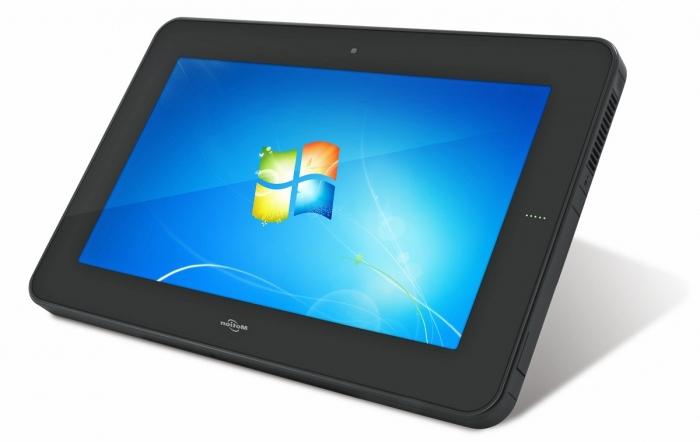A few days ago, a middle-aged good friend of mine announced that she was going to buy a gift for her grandson - a tablet. Exactly the one he has long dreamed of. At the same time, it was obvious that the woman did not understand at all what a tablet was. For example, the name of the device was taken for it by the manufacturer, etc. Although such a total misunderstanding is rare, many still have a question about what a tablet is. This is not surprising, given the "youth" of the device, the beginning of mass sales of which began only five years ago.
So
what is a tablet? Perhaps there is no such person who does not know what a laptop looks like. This is a kind of “suitcase”, one inner side of which is a screen, and the other is a keyboard unit and the surface of the touchpad. A laptop, in comparison with a personal computer, has one indisputable advantage - mobility, because lifting a 2-3 kilogram is not difficult even for a woman. Yes, and the popular screen size of 15 inches is not too large. On the other hand, you cannot put such a portable computer in your pocket or small handbag. Therefore, the market has proposed and actively "moving" the successors of laptops - netbooks. The screen size has been reduced, on average, to 10 inches, and the components have become even more economical. However, for a long time they could not exist, giving way to even more compact tablets.

To understand what a tablet is and what its features are, you need to remember the design of the laptop. If you separate the top cover-screen from the keyboard unit, integrate all the key components into its body, and make the display touch, you get a real tablet computer.
Its advantages are obvious:
- Extended battery life.
- The all-in-one device.
- Poor dimensions and weight. Standard screen sizes are 7, 8, 9.7 and 10 inches. The mass also decreased, ranging from 300 to 700 g, depending on the model.
- The lack of a hard drive (replaced by a solid state memory).
- Work in any position.
- Low heat (for ARM processors).
You can often hear a question about the keyboard. Typically, a classic keyboard is missing from standard equipment. It is replaced by the image of the keys on the touch screen. Of course, if you need to type voluminous texts, you can connect a familiar USB keyboard or purchase a special case with an integrated key block.
Depending on the type of processor, there are tablets with the operating system Windows (Linux) and Android from Google. As a rule, Windows is installed on x86, and Android - on ARM. From the point of view of universality, the former are preferable, but their disadvantage is high heating and the need for a cooling system.
With a touch screen, everything is exactly the same as in the field of mobile phones: resistive models work by pressing, and capacitive ones by touch. The former are characterized by lower cost, but their capabilities are lower. So simple.
Sometimes people who do not know what a graphics tablet are confused with a tablet computer. These are different devices. Probably everyone tried at least once to draw with the mouse in the Paint program. It is not comfortable. But designers use a special solution - for example, a Bamboo tablet, which allows you to draw with a special “pen” on a small touch screen, the picture from which is transferred to a computer. It turns out a kind of “eternal” sheet of paper. It is worth remembering that this is also a tablet, although highly specialized.